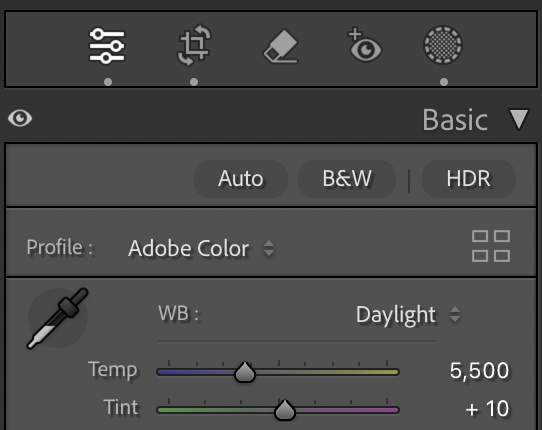SDR VS. HDR (For Beginners)
Should I Export My Photos in HDR or SDR for My Portfolio?
As a creative professional, the choice between HDR (High Dynamic Range) and SDR (Standard Dynamic Range) is an important one when exporting your work for online platforms, including your portfolio. If you’re using editing tools like Adobe Lightroom, you’ve likely seen the option to export in HDR, which promises more vibrant colors and greater detail. But is this the right choice for your portfolio on Fabrik?

What’s the Difference Between HDR and SDR?
- SDR (Standard Dynamic Range): This is the traditional format, supporting a limited range of brightness and color. SDR is universally compatible across devices and browsers, making it a reliable choice for displaying photos online.
- HDR (High Dynamic Range): HDR offers a much wider range of brightness, contrast, and colors, making it ideal for photos with complex lighting, such as landscapes or night shots. However, not all devices or browsers can display HDR properly, which can lead to inconsistent viewing experiences.
Why SDR is the Best Choice for Your Fabrik Portfolio
At Fabrik, we provide a seamless and elegant platform for showcasing creative portfolios to a wide audience. While HDR has its advantages, especially for those using high-end devices, the majority of users still access portfolios on devices and browsers that are optimized for SDR.
We recommend uploading your images in SDR to ensure your work looks consistent and professional on all devices. Here’s why:
- Universal Compatibility: SDR images will display correctly across all devices, browsers, and operating systems. Whether someone is viewing your portfolio on a smartphone, tablet, or desktop, they’ll see your work exactly as intended.
- Consistent User Experience: Since not all web browsers support HDR yet (with only Microsoft Edge and Safari offering limited HDR support), uploading in SDR ensures that your portfolio looks its best on every browser. If you upload HDR images, there’s a risk that users on older or unsupported devices may see inaccurate colors or brightness, which could detract from your work.
- Optimized Performance: Fabrik is designed for fast-loading, high-quality images. Since HDR files are larger, they can slow down load times, potentially affecting how quickly viewers can access your portfolio. SDR files are smaller and will load faster without sacrificing quality, providing a smoother experience for your audience.
- Reliable Compression: Platforms like Fabrik sometimes compress images to improve load times and optimize for web use. SDR images typically compress more predictably and retain their visual integrity across different screens, ensuring your photos remain sharp and detailed.
When to Use HDR
While we recommend SDR for uploading to Fabrik, there are certain cases where HDR can still be useful. If you're showcasing your portfolio in a private presentation or sharing it with clients or collaborators who you know have HDR-capable devices, exporting in HDR might be a great way to highlight the finer details in your work.
However, for general portfolio display on Fabrik, SDR remains the best option to maintain consistency and compatibility for all viewers.
Conclusion
If you’re uploading your portfolio to Fabrik, we recommend sticking with SDR exports. This ensures that your work looks professional, loads quickly, and displays consistently across all devices and browsers. HDR is a powerful tool for enhancing contrast and color, but for most online platforms, including Fabrik, SDR will give your audience the best viewing experience.
By exporting in SDR, you guarantee that your creative work shines—no matter where or how it's viewed.



